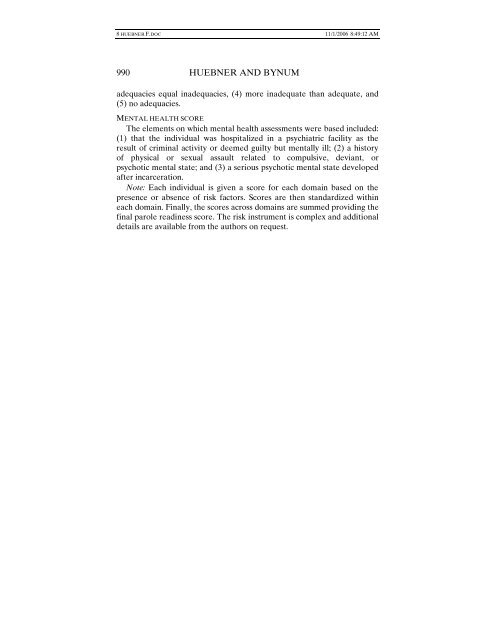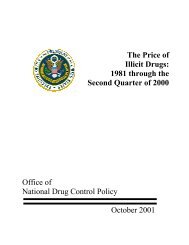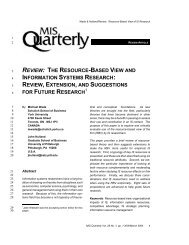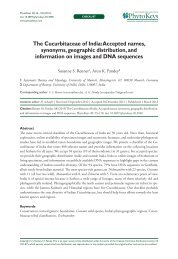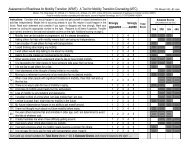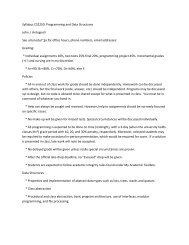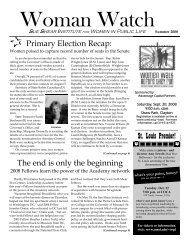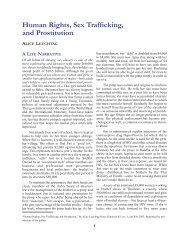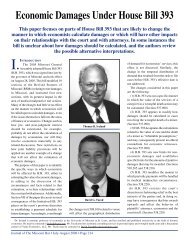an analysis of parole decision making using a sample of sex offenders
an analysis of parole decision making using a sample of sex offenders
an analysis of parole decision making using a sample of sex offenders
You also want an ePaper? Increase the reach of your titles
YUMPU automatically turns print PDFs into web optimized ePapers that Google loves.
8 HUEBNER F.DOC 11/1/2006 8:49:12 AM<br />
990 HUEBNER AND BYNUM<br />
adequacies equal inadequacies, (4) more inadequate th<strong>an</strong> adequate, <strong>an</strong>d<br />
(5) no adequacies.<br />
MENTAL HEALTH SCORE<br />
The elements on which mental health assessments were based included:<br />
(1) that the individual was hospitalized in a psychiatric facility as the<br />
result <strong>of</strong> criminal activity or deemed guilty but mentally ill; (2) a history<br />
<strong>of</strong> physical or <strong>sex</strong>ual assault related to compulsive, devi<strong>an</strong>t, or<br />
psychotic mental state; <strong>an</strong>d (3) a serious psychotic mental state developed<br />
after incarceration.<br />
Note: Each individual is given a score for each domain based on the<br />
presence or absence <strong>of</strong> risk factors. Scores are then st<strong>an</strong>dardized within<br />
each domain. Finally, the scores across domains are summed providing the<br />
final <strong>parole</strong> readiness score. The risk instrument is complex <strong>an</strong>d additional<br />
details are available from the authors on request.


